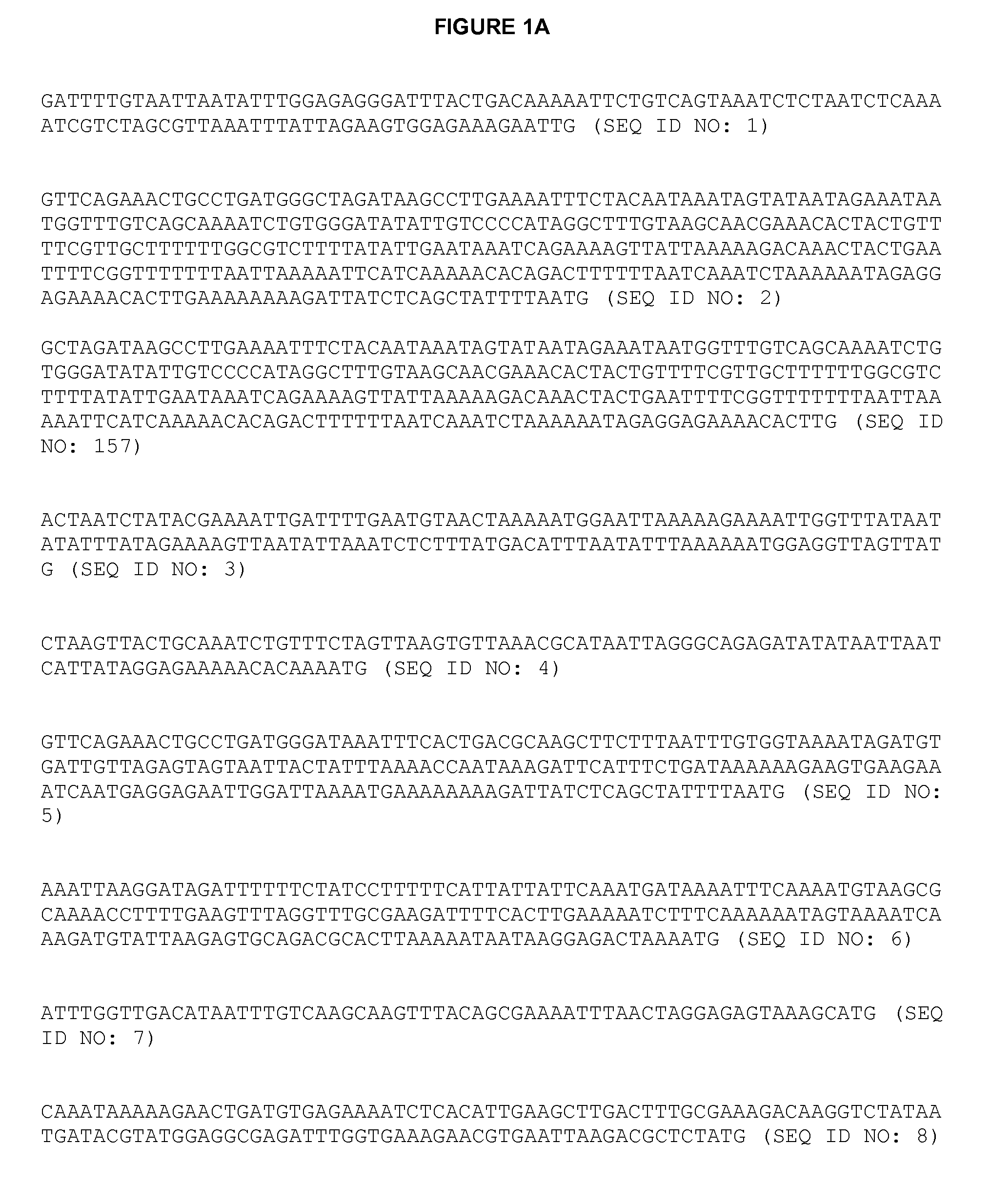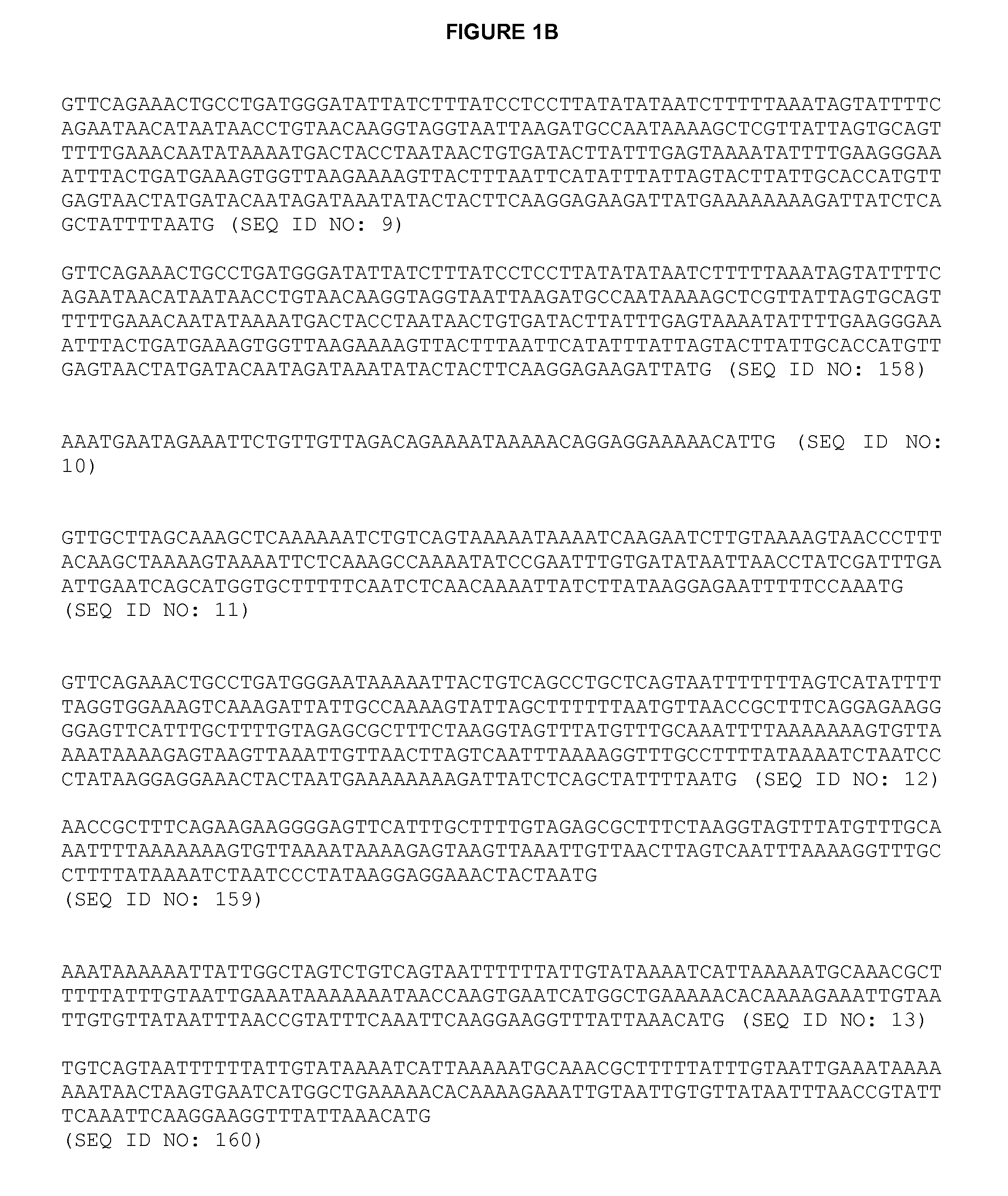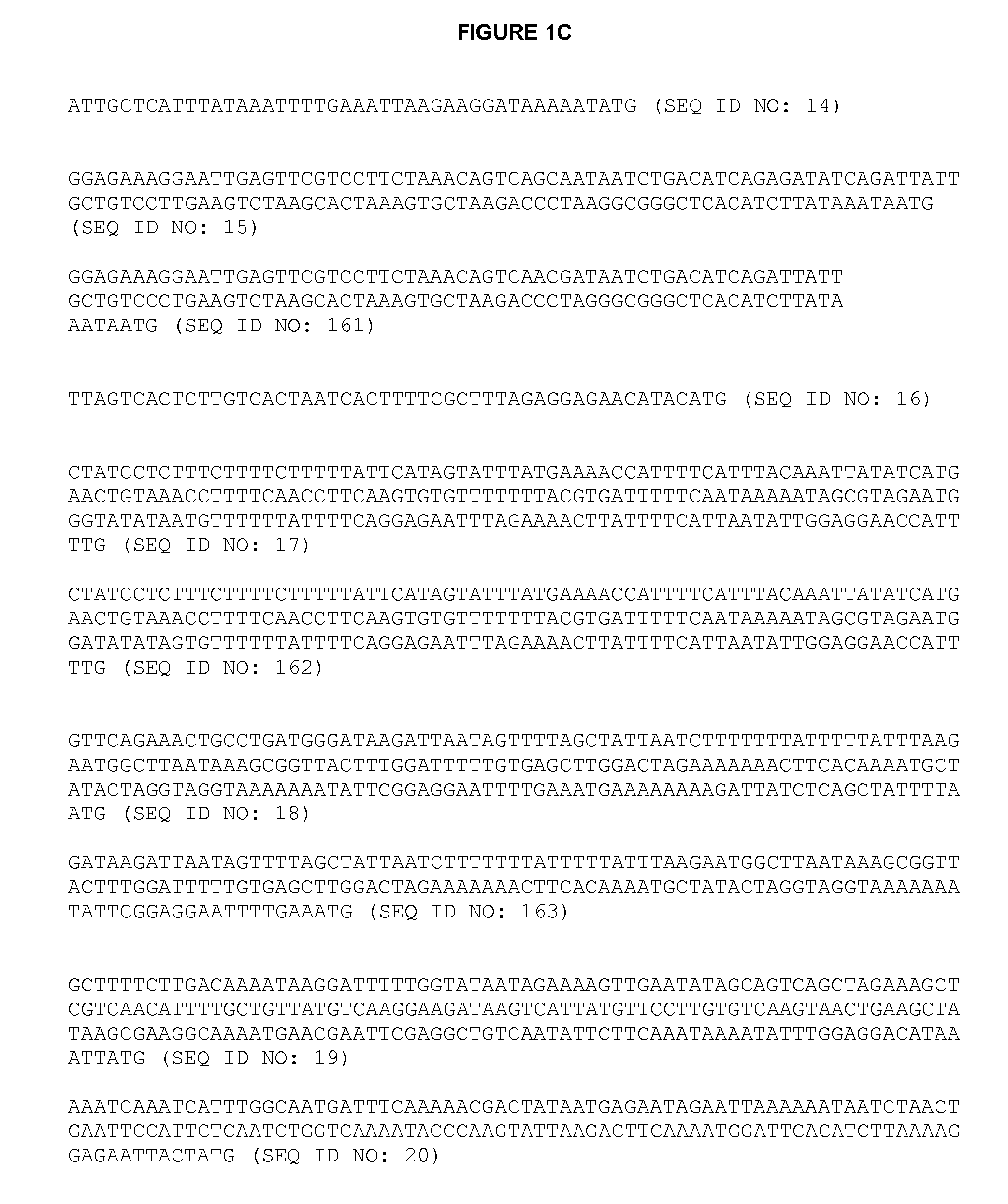Lactococcus promoters and uses thereof
a technology of promoters and lactococcus, applied in the field ofmolecular biology, can solve problems such as compromise of gras perception, and achieve the effect of high expression
- Summary
- Abstract
- Description
- Claims
- Application Information
AI Technical Summary
Benefits of technology
Problems solved by technology
Method used
Image
Examples
example 1
Isolation of Strong Promoters from Lactococcus lactis
[0243]Strongly expressed proteins were identified in Lactococcus lactis ssp. lactis MG1363 using the method of Antelmann et al. (2000).
[0244]Briefly, highly expressed proteins were identified by abundant protein spots in a 1 D gel (FIG. 2). The indicated protein bands were digested with trypsine and the peptide mixtures were analysed in LC-MS / MS mode in the ion trap mass spectrometer (Esquire HCT, Bruker). The spectra (only 250 MS / MS spectra per run were kept for data analysis) were analysed by MASCOT with the databank from Lactococcus lactis subsp. cremoris sk11 proteins (Genbank NC—008527). Peptides with a Mascot score above the identity threshold score are identified with a probability of 95%. The more peptides derived from the same protein, the more reliable the identification is.
[0245]This analysis produced a list of highly abundant proteins and the corresponding genes (Table 1 above, and FIG. 1). Based hereon, we identified...
example 2
Promoter Activity
[0246]A strategy was devised that allowed the subcloning of the various promoters in front of the secretable hIL-10 gene (FIG. 3). The subcloning was performed in a way that the hIL-10 expression cassettes were flanked by target sequences. This structure enables double homologous recombination around the thyA gene and thus chromosomal integration, essentially as described in Steidler et al. 2003 supra and WO 02 / 090551.
[0247]Schematically, the strategy is outlined with reference to FIG. 3:
A) Using appropriate primers, promoters are isolated by PCR from L. lactis MG1363 chromosomal DNA; B) promoters are joined to relevant flanking regions (partial upstream target region, partial hIL-10) by annealing PCR; C and D) Joined products are subcloned in a conditionally non-replicative plasmid by using appropriately positioned restriction endonuclease sites (NcoI+AflIII or alternatively NcoI+BstEII). This completes both the upstream target region and hIL-10. E) Promoter constr...
example 3
Promoter Strength
[0250]After identifying several promoters, we tested several promoter constructs in a further series of experiments. Moreover, in order to establish whether the promoter activity is independent from the reporter gene, we designed reporter constructs comprising the GLP-2 gene.
[0251]The human proglucagon gene (GenBank acc. nr. NM—002054) encodes a preproprotein that is cleaved into four distinct mature peptides, including glucagon-like peptide-2 (GLP-2). We designed a gene for h[Gly2]GLP-2 encoded in the preferential codon use of L. lactis. This gene encodes a mature human GLP-2 analog with an alanine to glycine substitution at position 2, which was shown reduce susceptibility to degradation by dipeptidyl peptidase-IV (Booth et al., 2004). The synthetic gene was assembled using state of the art methodology essentially as described by Stemmer et al. (1995), which is incorporated herein by reference.
[0252]The resulting fragment was fused to the usp45 secretion signal (v...
PUM
| Property | Measurement | Unit |
|---|---|---|
| identity threshold | aaaaa | aaaaa |
| nucleic acid | aaaaa | aaaaa |
| pharmaceutical composition | aaaaa | aaaaa |
Abstract
Description
Claims
Application Information
 Login to View More
Login to View More - R&D
- Intellectual Property
- Life Sciences
- Materials
- Tech Scout
- Unparalleled Data Quality
- Higher Quality Content
- 60% Fewer Hallucinations
Browse by: Latest US Patents, China's latest patents, Technical Efficacy Thesaurus, Application Domain, Technology Topic, Popular Technical Reports.
© 2025 PatSnap. All rights reserved.Legal|Privacy policy|Modern Slavery Act Transparency Statement|Sitemap|About US| Contact US: help@patsnap.com



